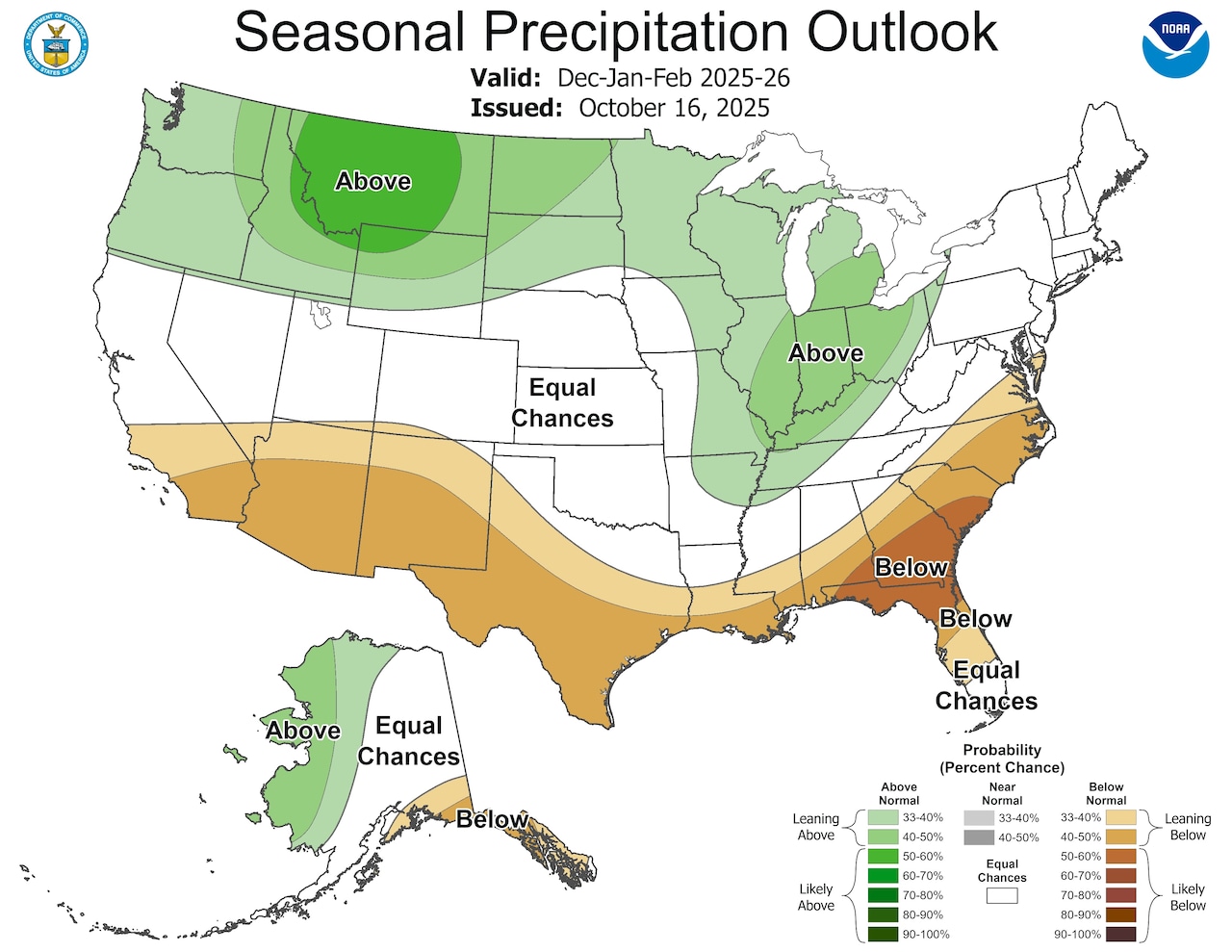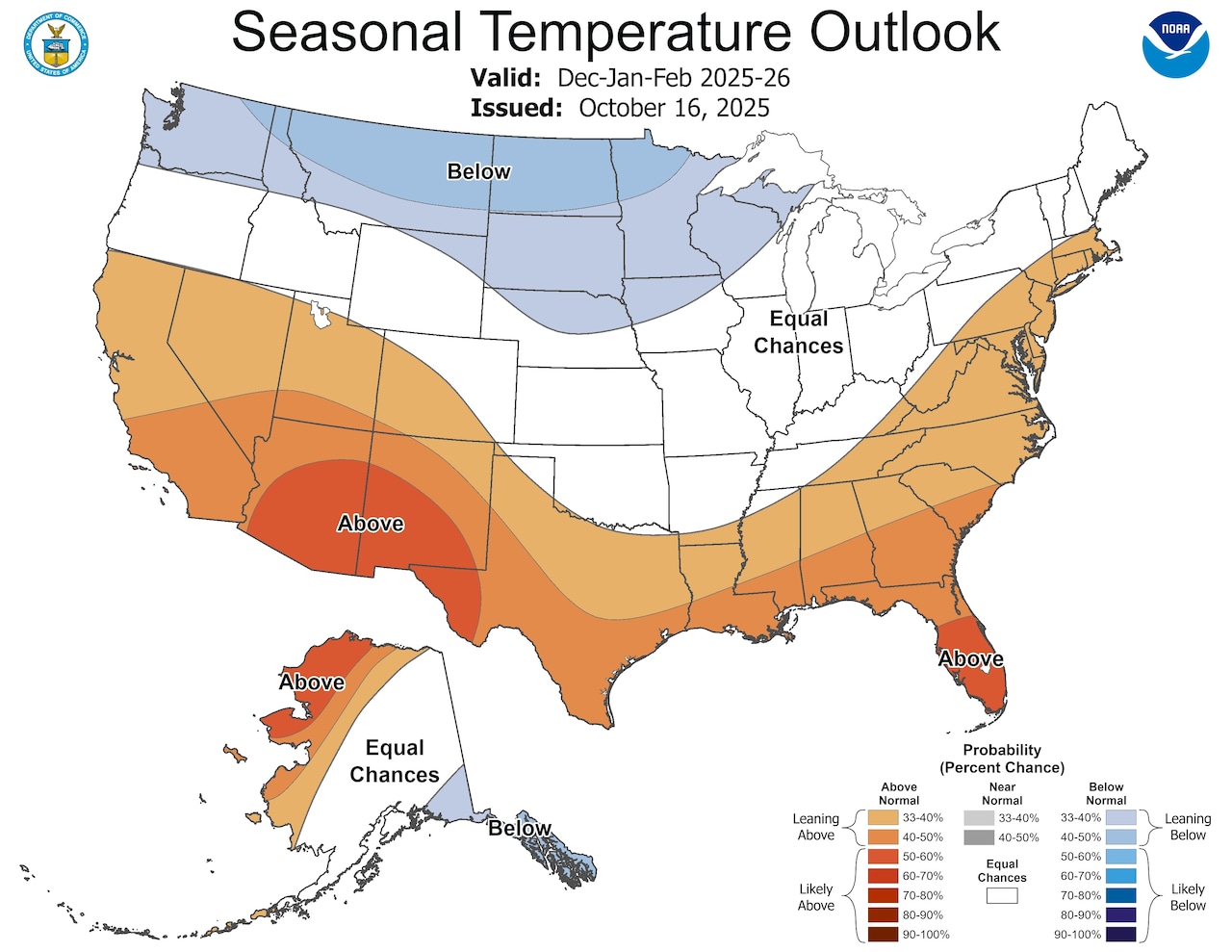Before you know it, pumpkins will be replaced by Christmas trees and winter will descend upon New York.
While meteorological winter begins on Dec. 1 and ends on the last day of February, astronomical winter begins on Dec. 21 and ends on March 20.
With winter comes cold conditions, but according to the National Oceanic and Atmospheric Administration’s winter outlook for 2025-2026, it may not be as chilly as usual in parts of the Empire State.
As noted in the seasonal temperature outlook encapsulating the months of December, January and February, the areas of New York from the Hudson Valley on south, including New York City, have a 33-40% chance of generally recording above-average temperatures.
This does not mean that the city can’t experience a deep freeze at some point in the winter, it simply means that within those three months, it seems as though temperatures on the majority of days will exceed the average.
For the Central Park area, the mean average temperatures for December, January and February are 39.1, 33.7 and 35.9 degrees Fahrenheit, respectively, according to National Oceanic and Astmospheric Administration data from 1991-2020.
In addition to the seasonal temperature outlook issued on Thursday, the National Oceanic and Atmospheric Administration also put out a seasonal precipitation outlook for the same set of months.
 This seasonal precipitation outlook by the National Oceanic and Atmospheric Administration shows there is an equal chance of above-average or below-average precipitation amounts across most of New York for the winter of 2025-2026.(National Oceanic and Atmospheric Administration)
This seasonal precipitation outlook by the National Oceanic and Atmospheric Administration shows there is an equal chance of above-average or below-average precipitation amounts across most of New York for the winter of 2025-2026.(National Oceanic and Atmospheric Administration)
That forecast revealed that the vast majority of the state has equal chances of experiencing above-average or below-average precipitation amounts. In other words, it looks like a typical winter for precipitation across most of New York.
The only exception to this outlook is the westernmost edge of the state, which has a 33-40% probability of precipitation amounts exceeding their average in December, January and February.
For reference, Central Park typically records 4.38, 3.64 and 3.19 inches of precipitation in December, January and February, respectively, a National Oceanic and Atmospheric Administration data set revealed.
An emerging consensus
This seasonal outlook is the latest winter forecast to suggest New York is heading towards a warner-than-average stretch of months.
Recently, the Old Farmer’s Almanac issued a winter forecast indicating that the majority of New York is slated to experience above-average temperatures. Moreover, the forecast called for below-average precipitation amounts, including less snow.
AccuWeather put out a winter forecast of their own earlier this month. In that outlook, AccuWeather said temperatures will run slightly above normal in New York City during the months ahead.
Additionally, it was revealed that residents should expect less snow than usual this winter. In all, AccuWeather revealed that the city is forecast to receive between 17 and 21 inches of snow through the end of the winter.
The estimated snowfall total falls short of the historical average snowfall recorded in the city, registered at 29.8 inches. Still, the anticipated snowfall amount exceeds the 12.9-inch snowfall tally recorded last winter.
As these winter forecasts continue to emerge, it seems as though the consensus is that this will not be a consistently freezing and abundantly wet season.
If you purchase a product or register for an account through a link on our site, we may receive compensation. By using this site, you consent to our User Agreement and agree that your clicks, interactions, and personal information may be collected, recorded, and/or stored by us and social media and other third-party partners in accordance with our Privacy Policy.

